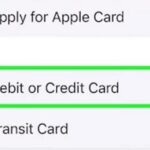Are you looking for How To Trade In Motorcycle With Loan? Trading on a motorcycle with an outstanding loan can be a complex process, but with the right approach, it can be simplified. It’s crucial to understand the value of your motorcycle and the remaining loan balance. This article will guide you through the steps to successfully trade in your motorcycle with a loan.
Key Takeaways
- Understand your motorcycle’s trade-in value versus the loan balance.
- Communicate with your lender about the trade-in process.
- Find a dealership that accepts trade-ins with outstanding loans.
- Be prepared to negotiate the trade-in value.
- Know the tax implications of trading in your motorcycle.
How To Trade In Motorcycle With Loan?
Trading on a motorcycle with an outstanding loan involves several steps that require attention to detail and careful planning. Here’s a detailed guide on how to navigate this process:

1. Determine Your Payoff Amount
Contact your lender to find out the exact payoff amount of your motorcycle loan. This amount may include the remaining balance plus any fees or interest that accrue until the loan is paid off. Make sure to ask for a formal payoff quote in writing, which should also state how long the payoff amount is valid.
2. Assess Your Motorcycle’s Value
Research the current market value of your motorcycle. You can use online valuation tools from resources like Kelley Blue Book or NADA Guides, which provide estimates based on your motorcycle’s make, model, year, condition, and mileage. It’s also wise to check listings for similar motorcycles to get an idea of the selling prices.
3. Get a Professional Appraisal
Consider getting a professional appraisal from a dealership or an independent appraiser. They can provide a more accurate trade-in value based on a physical inspection of your motorcycle. This step is especially important if your motorcycle has custom features or aftermarket parts that might affect its value.
4. Calculate Equity or Negative Equity
Subtract the payoff amount of your loan from the estimated trade-in value of your motorcycle. If the trade-in value is higher, you have equity that can go towards your next motorcycle purchase. If it’s lower, you have negative equity, and you’ll need to decide how to cover the difference.
5. Visit Dealerships
Take your motorcycle to several dealerships to get trade-in offers. Present the information you’ve gathered about your motorcycle’s value and your loan payoff amount. Be prepared to negotiate to get the best possible offer.
6. Address Negative Equity (if applicable)
If you have negative equity, you have a few options:
- Pay the difference out of pocket to clear the loan.
- Roll the negative equity into the new loan, if the lender and dealership agree. This will increase the loan amount for your new purchase.
- Postpone the trade-in until you’ve paid down the loan to a point where you no longer have negative equity.
7. Finalize the Trade-In Deal
Once you’ve negotiated a trade-in deal, the dealership will handle the paperwork. They will need to contact your lender to arrange for the loan payoff. Review all the documents carefully before signing to ensure the terms match what was agreed upon.
8. Confirm Loan Payoff
After the trade-in, follow up with your lender to confirm that they received the payoff amount from the dealership and that your loan account is closed. Keep all documentation of the payoff for your records.
9. Complete the Purchase of Your New Motorcycle
If you’re trading in your motorcycle for a new one, finalize the purchase by negotiating the price, understanding the financing terms, and completing all necessary paperwork. Make sure the terms of any new loan are clear, especially if you’ve rolled over negative equity.
10. Transfer Ownership
Ensure that the dealership transfers the title of your motorcycle to the new owner or to themselves if they’re keeping it on the lot. This step is crucial to avoid any legal issues regarding ownership of the motorcycle.
11. Update Your Insurance
Contact your insurance company to update or cancel your policy on the traded-in motorcycle and set up insurance for your new motorcycle if applicable.
Assessing Your Motorcycle’s Value
Before heading to the dealership, it’s essential to know your motorcycle’s current market value. Use online valuation tools, compare similar models for sale, and consider getting a professional appraisal. This knowledge will empower you to negotiate effectively.
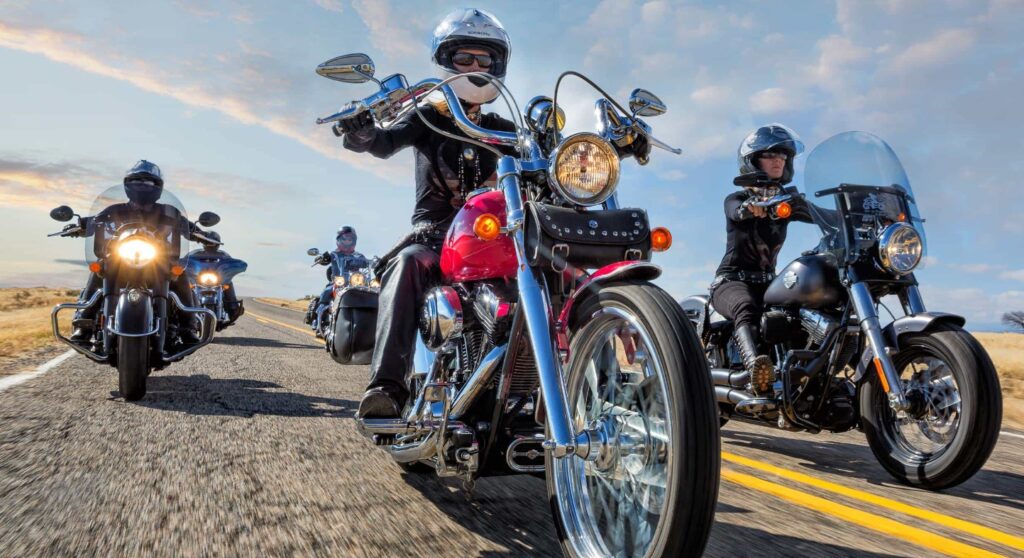
Understanding Loan Payoff
Your loan payoff amount may differ from the balance shown on your last statement due to interest accrual. Contact your lender to get the exact payoff amount before proceeding with a trade-in.
Choosing the Right Dealership
Not all dealerships handle trade-ins with loans attached. Research and choose a dealership experienced in these transactions. They can facilitate the process and may offer better terms due to their expertise.
Negotiating the Deal
Armed with your motorcycle’s value and loan payoff information, negotiate with the dealership. Aim to get a trade-in offer that covers most, if not all, of your loan balance.
Handling Negative Equity
If your motorcycle’s value is less than the loan balance, you have negative equity. In this case, you can pay the difference out of pocket or roll the negative equity into your new loan, though the latter option can increase your financial burden.
Managing the Loan Transfer
The dealership will work with your lender to transfer the loan balance. Ensure all paperwork is accurate and that the loan is paid off promptly to avoid any issues with your credit.
Tax Advantages
Trading on your motorcycle can offer tax benefits. In many states, you only pay sales tax on the difference between the trade-in value and the new motorcycle’s price, potentially saving you money.
Finalizing the Trade-In
Once you agree on a trade-in value, the dealership will handle the rest. They’ll pay off your loan and apply the motorcycle’s value towards your new purchase.
Key Aspects Of Trading In A Motorcycle With A Loan

Preparing for Trade-In
Before you set foot in the dealership, preparation is key. Start by gathering all necessary documents related to your motorcycle and loan. This includes your registration, any service records, and loan account details. These documents will provide proof of maintenance, verify ownership, and give the dealer insight into the loan’s status.
Gathering Documentation
Collecting the right paperwork streamlines the trade-in process. Ensure you have your motorcycle’s title, if you hold it, and any relevant warranties or additional coverage policies. This information can increase the perceived value of your motorcycle and potentially improve the trade-in offer.
Servicing Your Motorcycle
Consider having your motorcycle serviced before the trade-in. A well-maintained bike can fetch a higher offer. Simple steps like a thorough cleaning, oil change, and tire check can make a significant difference. Presenting a motorcycle in top condition reflects well on its value.
Communicating with Your Lender
Open communication with your lender can facilitate a smoother trade-in process. Inform them of your intention to trade in the motorcycle and discuss how they handle the transfer of loans in such situations.
Understanding Lender Requirements
Each lender may have specific requirements or processes for handling trade-ins. Some may require a written notice, while others might have an online process. Knowing these details can prevent any misunderstandings or delays.
Exploring Loan Portability
Some lenders offer loan portability, which allows you to transfer the balance of your existing loan to the new motorcycle. This can be a convenient option, but it’s important to understand the terms and whether it’s financially advantageous in the long run.
Evaluating Trade-In Offers
When you receive a trade-in offer, it’s not just about the bottom line. Evaluate the offer in the context of your financial situation and the market value of your motorcycle.
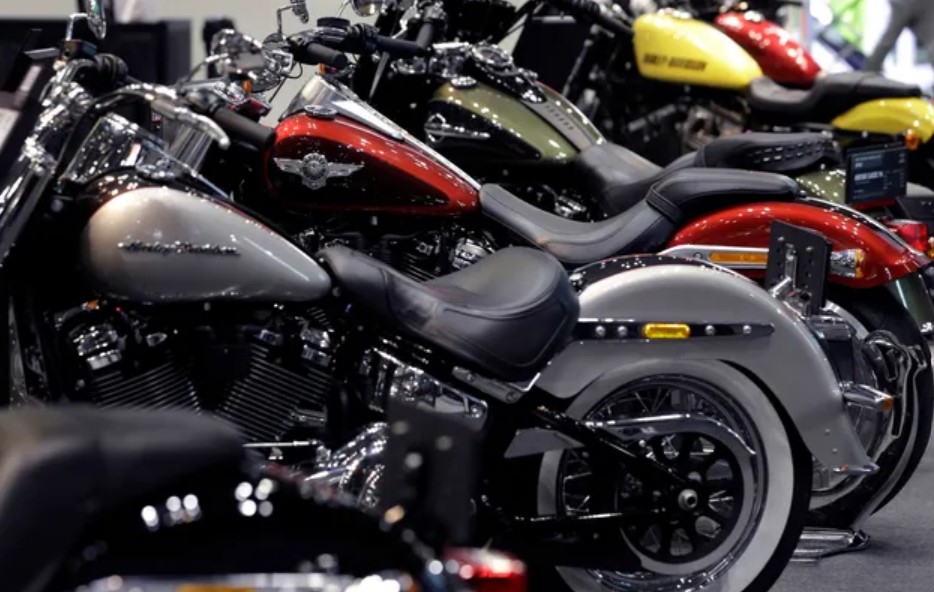
Assessing Offer Fairness
Research the current market to understand what a fair trade-in offer would look like for your motorcycle model. Use this information to assess the offer from the dealership. Don’t hesitate to negotiate or seek offers from multiple dealerships.
Considering Multiple Dealerships
Shopping around can lead to better trade-in offers. Visit several dealerships to see who can provide the best deal. This can also give you leverage in negotiations, as dealerships often compete to earn your business.
Finalizing the Trade-In Agreement
Once you’ve negotiated a satisfactory offer, it’s time to finalize the agreement. This will involve a close review of all the terms and conditions of the trade-in proposal.
Reviewing the Contract
Carefully read the trade-in agreement before signing. Look for any hidden fees or conditions that could affect the value of the deal. Make sure the loan payoff and trade-in values are clearly stated and accurate.
Understanding Future Obligations
If you’re rolling over negative equity into a new loan, understand your future financial obligations. Ensure that the terms of the new loan are manageable and that you’re not putting yourself in a precarious financial position.
Maintaining Financial Health
Trading in a motorcycle with a loan is not just about transitioning to a new bike; it’s also about maintaining or improving your financial health. Consider how this trade-in will affect your finances in the long term.
Budgeting for New Payments
If you’re taking on a new loan, create a budget that accounts for the new payment amounts. Ensure that this fits within your financial means and doesn’t overextend your monthly expenses.
Protecting Your Credit Score
Ensure that the loan payoff from the trade-in is processed promptly. Delays or errors can negatively impact your credit score. Follow up with your lender to confirm that the loan has been paid off in full.
How Do You Trade In A Motorcycle You Still Owe Money On?
Trading in a motorcycle that you still owe money on involves a few critical steps. First, you need to determine the payoff amount of your loan, which can be obtained from your lender. This figure represents the total you need to pay to clear the loan, including any interest and fees up to the payoff date.
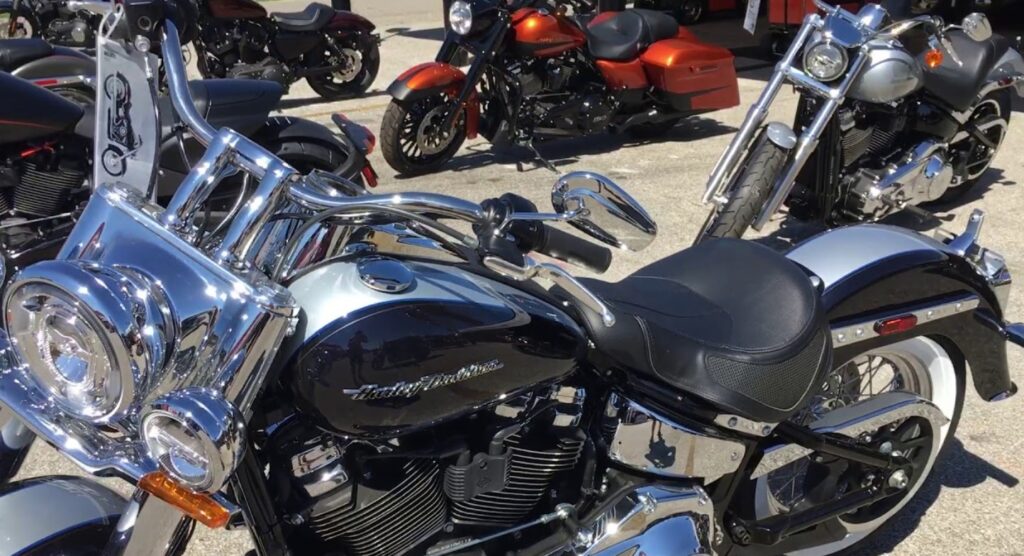
Next, take your motorcycle to the dealership where you intend to trade it in for an appraisal. The dealer will assess the bike’s value based on its condition, mileage, and market demand.
If the appraisal value is greater than the payoff amount, you have positive equity, and the excess can be applied to your next purchase or received as cash. However, if the appraisal value is less than what you owe, this is negative equity, and you will need to cover the difference. This can be done by paying the shortfall out of pocket or, in some cases, rolling the negative equity into the new loan for your next vehicle.
It’s important to negotiate the trade-in value and understand the terms of any new loan agreement, especially if you’re rolling over negative equity. Ensure that all financial transactions are transparent and that the dealer provides written confirmation of the payoff on your existing loan.
How Do I Sell My Motorcycle With A Loan?
Selling a motorcycle with an outstanding loan can be more complex than selling one that’s already paid off, but it’s certainly possible. The first step is to inform your lender about your intention to sell the motorcycle and ask for the payoff amount. It’s also wise to ask about the process for handling the sale with a loan in place, as some lenders may have specific requirements.
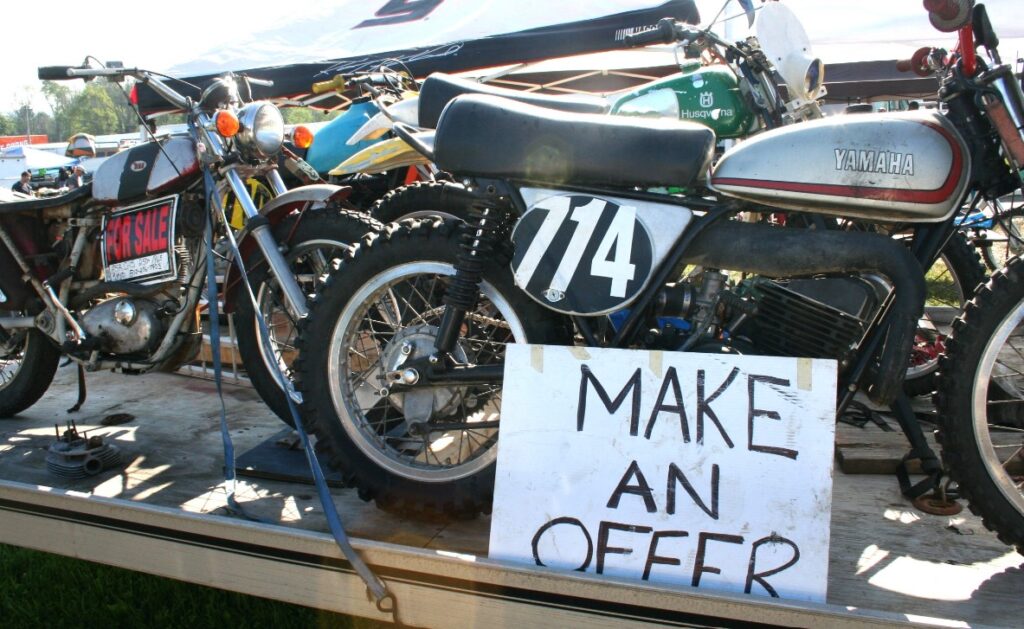
You’ll then need to find a buyer, which can be done privately or through online marketplaces. When you find a buyer, you must ensure they’re aware of the loan and agree to the process.
The safest way to complete the sale is to conduct the transaction at the bank or financial institution that holds your loan. This way, the buyer can pay the bank directly for the payoff amount, and any additional funds can be transferred to you. If there’s a remaining balance owed after the sale, you’ll be responsible for covering it.
Once the loan is paid off, the lender will release the lien on the motorcycle, allowing you to transfer the title to the buyer. Be sure to follow your state’s requirements for title transfer and bill of sale to legally complete the transaction.
Can I Sell A Bike On Finance?
Selling a bike that is still on finance is permissible, but it requires careful coordination because the bike is technically owned by the finance company until the loan is paid off.
To sell a financed bike, you must first obtain the exact payoff amount from your finance company, which will include any early settlement fees. Once you have this figure, you can sell the bike, but the loan must be settled as part of the sale process.
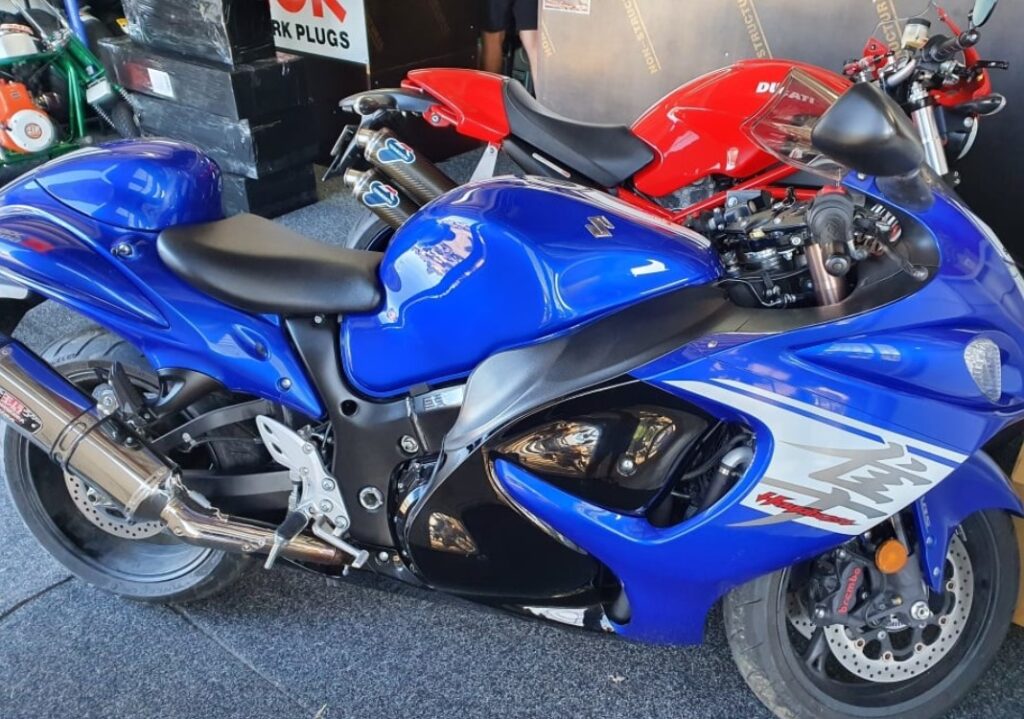
The most straightforward approach is to sell the bike for at least the amount you owe. If selling privately, the buyer’s payment can go directly to the finance company to settle the loan, with any surplus going to you.
If the sale price doesn’t cover the loan, you’ll need to pay the difference. Alternatively, you can settle the finance amount before selling the bike, though this requires having the funds available to clear the loan.
It’s essential to be transparent with potential buyers about the bike being on finance and to ensure the finance is cleared before or at the time of sale to avoid legal complications.
Can You Trade In A Motorcycle With Negative Equity?
Trading in a motorcycle with negative equity is possible, but it involves additional financial considerations. Negative equity occurs when the loan balance exceeds the motorcycle’s current market value.
When trading in under these circumstances, the dealership will add the negative equity to the loan of your new purchase. This means you will finance the new motorcycle plus the remaining balance from your previous loan, which can increase your monthly payments and the total interest paid over time.
It’s crucial to carefully consider the financial implications of trading in a motorcycle with negative equity. Some dealers may offer promotions or incentives to absorb some of the negative equity, but these are typically factored into the cost of the new loan.
It’s advisable to consult with financial advisors or use loan calculators to understand how the negative equity will affect your new loan terms and to explore other options that may be financially more beneficial.
Conclusion
Trading in a motorcycle with a loan requires careful consideration of your bike’s value and your loan balance. By choosing the right dealership and understanding the financial implications, you can smoothly transition to your new motorcycle. Remember, how to trade in a motorcycle with a loan isn’t just about numbers; it’s about making a strategic move towards your next ride.
Top FAQ’s
Can I trade in my motorcycle to a dealer if I still owe money on it?
Yes, you can trade in a motorcycle even if you still owe money on it. The dealer will evaluate the bike’s value and can pay off the remaining loan balance as part of the trade-in process. If the trade-in value is higher than the loan balance, the surplus may go towards your next purchase. If it’s lower, the deficit may be rolled into the new loan.
What happens to the remaining loan balance when I trade in my financed motorcycle?
When you trade in a financed motorcycle, the dealer will handle paying off the remaining loan balance directly to the lender. If the trade-in offer is less than what you owe, the remaining balance can be transferred to the new loan for your next motorcycle.
Is it better to sell my motorcycle privately or trade it in if I have an outstanding loan?
Selling your motorcycle privately may yield a higher price than trading it in, which can be beneficial if you owe more on the loan than the bike’s trade-in value. However, trading it in can be more convenient and quicker, especially if you’re looking to purchase another motorcycle from the dealer.
How does trading in a motorcycle with a loan affect my credit?
Trading in a motorcycle itself does not negatively affect your credit. However, if rolling over an existing loan balance into a new loan significantly increases your debt, it could potentially impact your credit utilization ratio, which is a factor in your credit score.
A multifaceted professional, Muhammad Daim seamlessly blends his expertise as an accountant at a local agency with his prowess in digital marketing. With a keen eye for financial details and a modern approach to online strategies, Daim offers invaluable financial advice rooted in years of experience. His unique combination of skills positions him at the intersection of traditional finance and the evolving digital landscape, making him a sought-after expert in both domains. Whether it’s navigating the intricacies of financial statements or crafting impactful digital marketing campaigns, Daim’s holistic approach ensures that his clients receive comprehensive solutions tailored to their needs.






